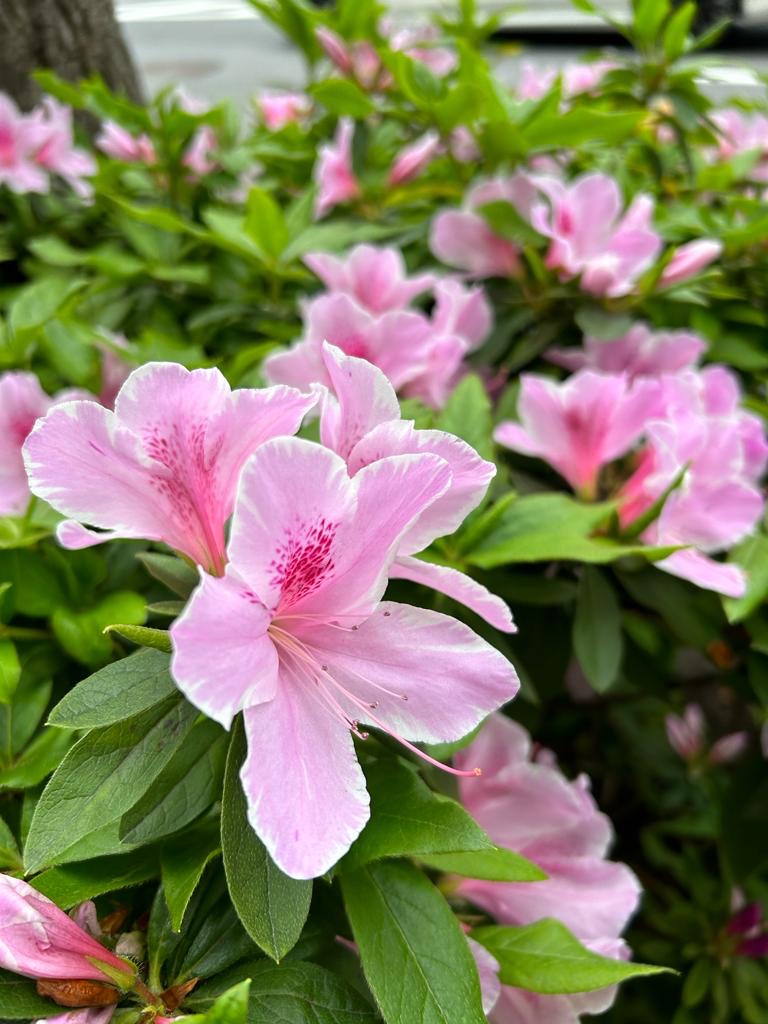Yesterday was a non-working holiday in the Philippines in celebration of the Chinese New Year. Holidays meant I got the chance to sleep in, have a late rush-free breakfast, and time to catch up on blogging and chores. It was a breath of fresh air walking around the traffic-free Makati neighborhood on holidays.
While we were walking back to our apartment, D and I were summoned by the sound of drums a couple of buildings away, and came upon colorfully-clad folks with props, getting ready for a dragon and lion dance. I’ve always been fascinated by this dance, though I never truly knew why I see them all the time during this holiday. So, for this year, I decided to get to know a little more about the Tsinoy (Chinese-Filipino) traditions during Chinese New Year. My friends were more than happy to talk about their happy family practices, and here’s what I gathered so far:
First off, though the words “Kung Hei Fat Choi” are widely said (and printed on tarpaulins, ads) in the Philippines, the more proper way for the Tsinoys to be greeted is “Kiong Hee Huat Tsai”. Majority of the Tsinoys are Hokkien, and Kiong Hee, for short, means “I wish you happiness”.
Ang Pau
These red envelopes have gold patterns printed on the outside and have money inside them. They are given by the elders to the younger members of the family, as a sign of passing on good fortune and blessings. Many Filipinos have accustomed to giving out ang paus during the Christmas season as well.
Food for Prosperity
A usual sight on the dinner table are the kiat kiat, pineapple, tikoy, pansit and whole fish.
Round shapes are believed to bring solid wealth, hence the kiat kiat – a small orange.

At the center of a fruit basket is a pineapple, which is believed to bring good luck. In Hokkien, pineapple is called Ong Lai, which translates to ‘prosperity comes’.
Tikoy, is a sticky cake, is known as the Chinese New Year cake. We receive this as a gift from our Chinese friends, and we usually dip it in beaten egg and fry it. The belief is that because it is made of sticky rice, it ensures the family’s togetherness.
Pansit, or noodles, are cooked and served uncut, to symbolize longevity.
Lastly is the fish, which must be cooked and served whole. The usual way to cook the fish is by steaming. My friend said it symbolizes sagana or surplus.
Dragon and Lion Dance
For families with stores or establishments, they hire dragon and lion dancers as they are believed to bring good fortune for the business. The lion dance is composed of 2 dancers (the head and the tail), while the dragon dance is composed of several dancers holding the body of the dragon on with sticks. My favorite part when watching this is the beat of the drums and the movements of the lion. In today’s dance, I saw the lion reach out to receive a gift mounted on the entrance door of the building.
I wish was able to go to Binondo to see more of the dragon and lion dances and experience the celebration of Chinese New Year more up close.

